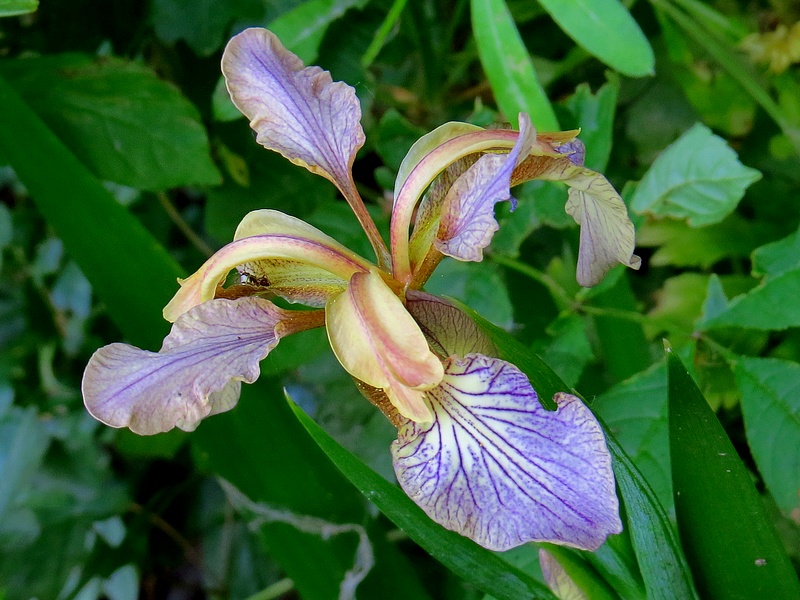Iris foetidissima L. (W Eur., NW Afr.) – A rare but increasing, locally naturalized escape from cultivation. Probably first documented from coastal dunes in De Panne in 2008 and since then recorded in several additional, more or less widely scattered localities (Leten 2013). In the past years further recorded in, for instance, Kortrijk, Peer and Roeselare. In some of these localities Iris foetidissima is firmly established and doubtlessly naturalized. It thrives best in shady habitats: under scrub, in deciduous woodland, etc. It is most easily detected in winter when its evergreen leaves and bright orange or scarlet seeds are very showy. In other seasons it may easily pass unrecorded.
At least in some of its localities Iris foetidissima grows in more or less natural (or nature-like) habitats that resemble those in which it is found in its native distribution range. A natural range extension cannot be ruled out, the species being (probably) native in northwestern France, relatively close to the Belgian frontiers. However, in most instances the species obviously is a garden escape (sometimes even a mere throw-out). Once established, it is rapidly dispersed, probably by berry-eating animals. It is sometimes considered an unwelcome, invasive species, for instance in New Zealand.
 |
 |
 |
 |
Selected literature:
Allen D.E. (1988) Iris foetidissima L. Plant Crib 1988: 117.
Leten M. (2013) Veranderende floristiek in een veranderend landschap. Beschouwingen naar aanleiding van waarnemingen van Iris foetidissima, nieuw voor de Belgische flora. Dumortiera 102: 17-31. [available online at: http://www.br.fgov.be/DUMORTIERA/DUM_102/Dum_102_17-31_Iris%20foetidissima_Leteni.pdf]
Virecoulon F. (1999) Iris foetidissima L. Pl. Mont. Rocaille 12(191): 571-573.

